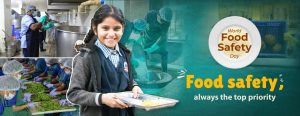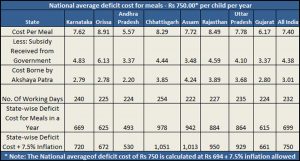Gururaj “Desh” Deshpande recently took a tour of our Jaipur kitchen with Former US President Bill Clinton. The visit also entailed interacting with the beneficiaries at one of the schools and serving food among others. Deshpande, Ravindra Chamaria and the Government of India had made a Commitment to Clinton Global Initiative to scale up and reach out to more children with mid day meals, in 2008. To know more click here.
Talking to the Boston Globe correspondent about the visit and Akshaya Patra, Deshpande emphasised on the essence of mid day meal programme “One educated person in the family can lift the family out of poverty, break the cycle,” he said.
He explained Social Innovation as the application of business strategies to solve social problems and said “Technology and compassion, together, can make magic” referring to the mechanised kitchens of Akshaya Patra.
Akshaya Patra operates kitchens in 23 locations in India of which 21 kitchens are mechanised and 11 of them are ISO certified. Some of our kitchens have also been certified by International Food Safety Management System. The kitchens have the capacity to cook for up to 100,000 meals in a few hours. The roti (Indian bread) making machines convert the wheat to flour and then to dough and have the capacity to roll out up to 200,000 rotis.
The kitchens attract people from around the world and have become a model to study for institutes such as Harvard Business School. Read more on what Deshpande and others had to share about the Akshaya Patra with the correspondent on BostonGlobe.com
Source: http://www.bostonglobe.com/lifestyle/food-dining/2014/07/22/andover-philanthropist-works-distribute-school-meals-impoverished-indian-children/GF7FMpikDZX4OIN15ArF3H/story.html



















 Design
Design


